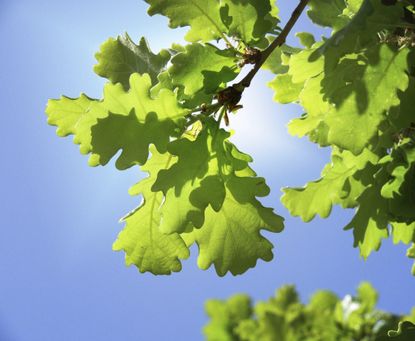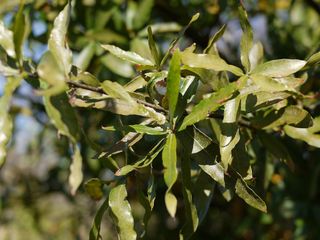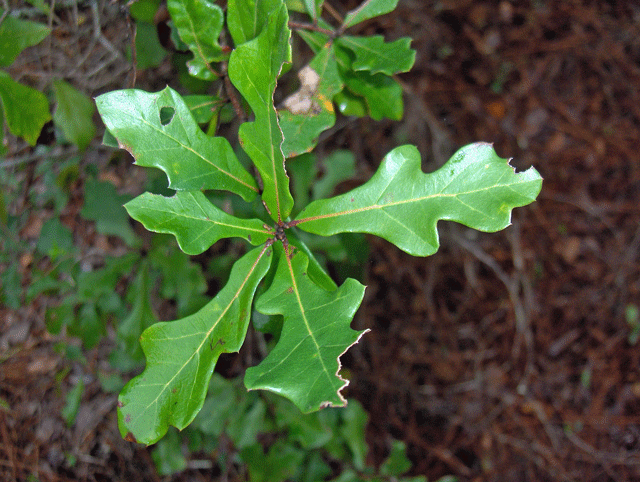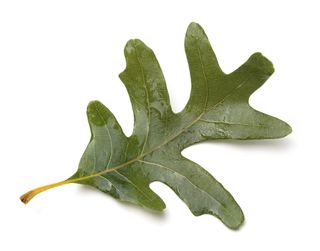Common Oak Trees: Oak Tree Identification Guide For Gardeners


Oaks (Quercus) come in many shapes and sizes, and you'll even find a few evergreens in the mix. Whether you are looking for the perfect tree for your landscape or want to learn to identify the different types of oak trees, this article can help.
Oak Tree Varieties
There are dozens of oak tree varieties in North America. The varieties are divided into two main categories: red oaks and white oaks.
Red Oak Trees
Reds have leaves with pointed lobes tipped with tiny bristles. Their acorns take two years to mature and sprout the spring after they drop to the ground. Common red oaks include:

- Black oak

- Japanese evergreen oak

- Water oak

- Pin oak

White Oak Trees
The leaves on white oak trees are rounded and smooth. Their acorns mature in one year and they sprout soon after they fall to the ground. This group includes:
- Chinkapin

- Post oak

- Bur oak

- White oak

Most Common Oak Trees
Below is a list of oak tree types that are the most commonly planted. You'll find that most oaks are massive in size and not suitable for urban or suburban landscapes.
- White Oak Tree (Q. alba): Not to be confused with the group of oaks called white oaks, the white oak tree grows very slowly. After 10 to 12 years, the tree will stand only 10 to 15 feet tall (3-5 m.), but it will eventually reach a height of 50 to 100 feet (15-30 m.). You shouldn't plant it near sidewalks or patios because the trunk flairs at the base. It doesn't like to be disturbed, so plant it in a permanent location as a very young sapling, and prune it in the winter while it is dormant.
- Bur Oak (Q. macrocarpa): Another massive shade tree, the bur oak grows 70 to 80 feet tall (22-24 m.). It has an unusual branch structure and deeply furrowed bark that combine to keep the tree interesting in winter. It grows farther north and west than other white oak types.
- Willow Oak (Q. phellos): The willow oak has thin, straight leaves similar to those of a willow tree. It grows 60 to 75 feet tall (18-23 m.). The acorns aren't as messy as those of most other oaks. It adapts well to urban conditions, so you can use it a street tree or in a buffer area along highways. It transplants well while it is dormant.
- Japanese Evergreen Oak (Q. acuta): The smallest of the oak trees, the Japanese evergreen grows 20 to 30 feet tall (6-9 m.) and up to 20 feet wide (6 m.). It prefers the warm coastal areas of the southeast, but it will grow inland in protected areas. It has a shrubby growth habit and works well as a lawn tree or screen. The tree provides good quality shade despite its small size.
- Pin Oak (Q. palustris): The pin oak grows 60 to 75 feet tall (18-23 m.) with a spread of 25 to 40 feet (8-12 m.). It has a straight trunk and a well-shaped canopy, with the upper branches growing upward and lower branches drooping down. The branches in the center of the tree are nearly horizontal. It makes a wonderful shade tree, but you may have to remove some of the lower branches to allow clearance.
Gardening tips, videos, info and more delivered right to your inbox!
Sign up for the Gardening Know How newsletter today and receive a free download of our most popular eBook "How to Grow Delicious Tomatoes."

Jackie Carroll has written over 500 articles for Gardening Know How on a wide range of topics.
-
 Grow a Bathroom Oasis: 8 Best Bathroom Plants With No Light or Low Light
Grow a Bathroom Oasis: 8 Best Bathroom Plants With No Light or Low LightSome apartment dwellers grow the best bathroom plants with no light or low light. Read how one of our favorite plant lovers does it in the big city.
By Teo Spengler
-
 "My Worst Mistake" – Gardeners Share 10 Hard-Learned Lessons
"My Worst Mistake" – Gardeners Share 10 Hard-Learned LessonsGardeners never stop learning, and sometimes our mistakes are the best teachers. But why not save time and heartache by learning from other gardeners' failures?
By Melanie Griffiths